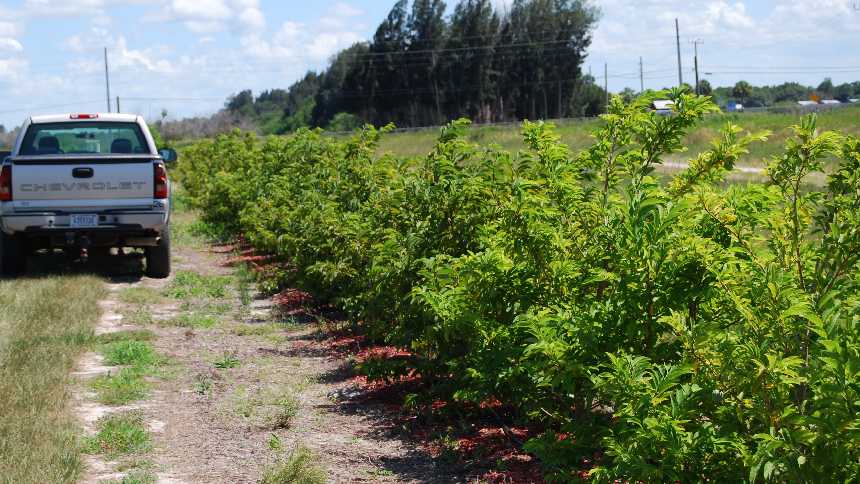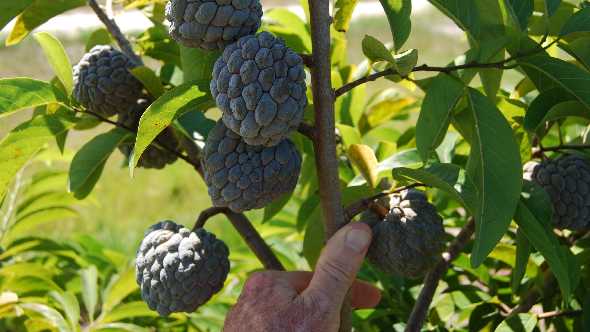Sugar Apple Emerges As Tempting Treat For Florida Growers

Photo by Kim Bowman
On the USDA research farm in Ft. Pierce, FL, at the end of a block dedicated to finding new citrus cultivars to re-invigorate the Florida citrus industry, grow a couple rows of novelty fruit crops. One of these fruit, the sugar apple, appears especially interesting for small-scale production in Florida.
On 30 small trees planted about 18 months ago and less than six feet tall, hundreds of the reddish lumpy fruit hang from branches, often obscured by foliage. Although still a couple months from harvest, anyone familiar with the luscious sugar apple fruit can already start to taste that exotic juicy sweet sensation. The next row over, another 30 sugar apple trees planted just nine months ago have a smaller crop, but still enough fruit to catch a sugar apple lover’s attention.
I have been successfully growing sugar apple in my back yard in Vero Beach for several years, and decided to put enough trees at the Ft. Pierce farm to have a look at it as an alternative crop for small scale commercial production. So far, the results look quite amazing.

Photo by Kim Bowman
The sugar apple, Annona squamosa, is relatively sensitive to cold, but it has been observed to survive most of our winters in the Indian River area with only leaf loss and a little dieback, re-growing in the spring and producing a crop every year.
Another potential limitation to growing Sugar Apple profitably is the narrow harvest window and rather short shelflife of harvested fruit, making this crop most suitable for small scale and local marketing.
Most of the trees planted in the research plot are a red fruited variety that I’ve been growing for several years. The most appealing aspects of this variety (besides the attractive fruit and mouth-watering taste) are ease of seed propagation and good cropping on very young trees.
Sugar apple grown other places has often been noted to have pollination problems that result in poor fruit production, but that does not appear to be a problem here. The one to two years from planting the seed to a fruiting small tree make this particular variety of sugar apple especially appealing to get a quick return on investment.
While sugar apple is a crop that will probably not make sense for large scale production, it appears well suited to small local producers and marketing at produce stands and to the tourist eager for an exotic tropical novelty.









